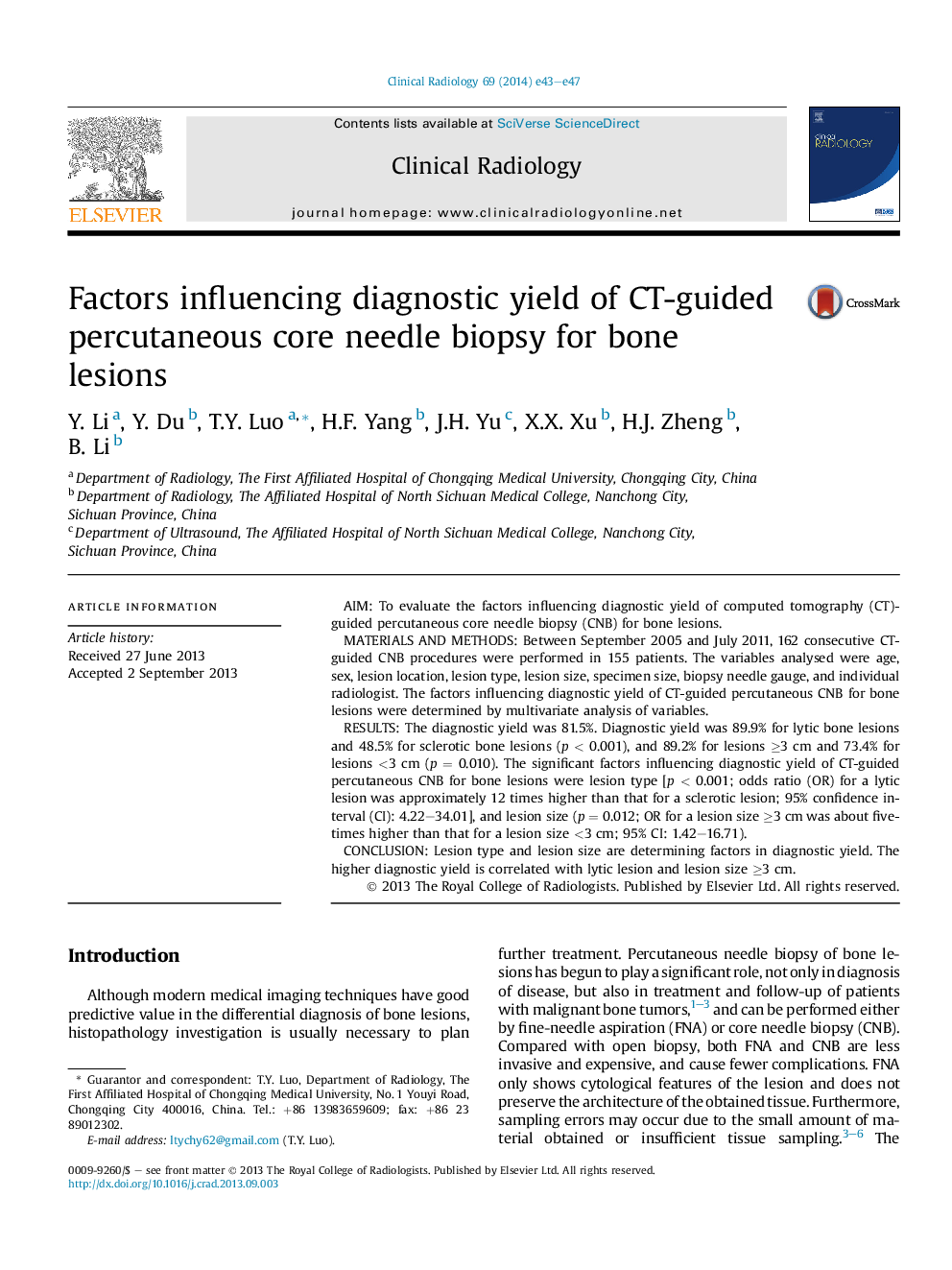| Article ID | Journal | Published Year | Pages | File Type |
|---|---|---|---|---|
| 3981720 | Clinical Radiology | 2014 | 5 Pages |
AimTo evaluate the factors influencing diagnostic yield of computed tomography (CT)-guided percutaneous core needle biopsy (CNB) for bone lesions.Materials and methodsBetween September 2005 and July 2011, 162 consecutive CT-guided CNB procedures were performed in 155 patients. The variables analysed were age, sex, lesion location, lesion type, lesion size, specimen size, biopsy needle gauge, and individual radiologist. The factors influencing diagnostic yield of CT-guided percutaneous CNB for bone lesions were determined by multivariate analysis of variables.ResultsThe diagnostic yield was 81.5%. Diagnostic yield was 89.9% for lytic bone lesions and 48.5% for sclerotic bone lesions (p < 0.001), and 89.2% for lesions ≥3 cm and 73.4% for lesions <3 cm (p = 0.010). The significant factors influencing diagnostic yield of CT-guided percutaneous CNB for bone lesions were lesion type [p < 0.001; odds ratio (OR) for a lytic lesion was approximately 12 times higher than that for a sclerotic lesion; 95% confidence interval (CI): 4.22–34.01], and lesion size (p = 0.012; OR for a lesion size ≥3 cm was about five-times higher than that for a lesion size <3 cm; 95% CI: 1.42–16.71).ConclusionLesion type and lesion size are determining factors in diagnostic yield. The higher diagnostic yield is correlated with lytic lesion and lesion size ≥3 cm.
